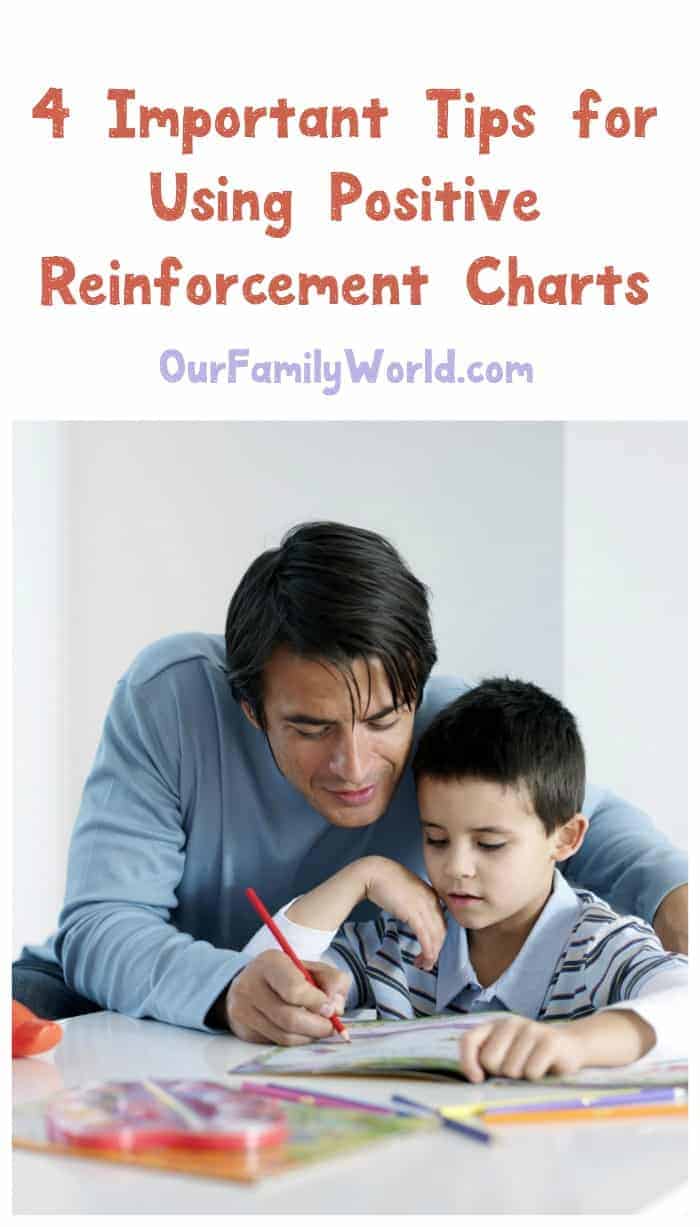Positive reinforcement charts, or reward charts, are common tools when it comes to positive parenting. They’re also frequently used in schools and child care facilities to motivate kids and encourage good behavior. The chart keeps track of how often kids engage in good behavior.
Every time a child successfully completes whatever task is listed on the chart, a sticker gets placed on it. Once children earn a predetermined number of stickers, they get a reward. This encourages them to continue with their good behavior so that they can earn more stickers and work toward more rewards.
Thinking of using a positive reinforcement chart to encourage good habits for your own kids? There are a variety of printable charts available online, from general behavior charts to more specific charts for things like homework or chores. You can also make a chart by filling in a blank template or create your own from scratch using paper or poster board. Here are a few tips for creating positive reinforcement charts.
Tips for Creating and Using Positive Reinforcement Charts
Keep it Clear and Simple
If your chart is too complicated or hard to read, it can be hard for your child to focus on good behavior. Write down very clearly what exactly they will be rewarded for doing, and make sure that the chart stays neat and organized. If your chart focuses on many different behaviors, it may be best to put them under different headings or a different chart entirely to make each one easy to read.
Stay Consistent
Often times, kids lose interest in a positive reinforcement chart if the behavior listed on the chart isn’t rewarded. Do everything that you can to monitor their behavior, and make sure to give them a star every single time they do it. If you forget to give them a sticker, they may lose interest in working toward the reward.
Make the Connection Clear
It’s important to make a clear connection between engaging in a good behavior and getting a reward. If possible, put a sticker on the chart immediately after the good behavior. Make sure you tell them why they’re getting the sticker when they get it, and maybe even count to see how many more it will take to get a reward. This will keep them excited about earning more stickers.
Don’t Let it Become a Bribe
If your kids aren’t behaving themselves, and you offer them a sticker to calm down, it doesn’t reinforce good behavior. Instead, it teaches them that if they act up they might be able to get a reward out of you anyway. Go over what they need to do in order to earn stickers ahead of time, and only give them the sticker if they keep up that behavior without being reminded. This way, instead of acting out in order to get the option of a reward, they engage in good behavior from the start.
In order for a positive reinforcement chart to be the most effective, your child needs to really want the reward. Talk to them about what kind of things they would like, and come to an agreement beforehand rather than going out and buying things without checking with them. That way, you’ll know you’re getting something they’ll want to work for.


A brilliant idea! Charts can also help you to focus on the positives in your child’s behaviour.
This might be helpful if you’re feeling frustrated by your child’s
behaviour and have been paying more attention to negative behaviour.
This is such a good idea! We are currently working on potty training in our house, and I think this would be very helpful! My son would love to have a sticker chart.
I’ve never made a positive reinforcement chart before. I think it’s going to help you discipline your child. That’s such a good idea!